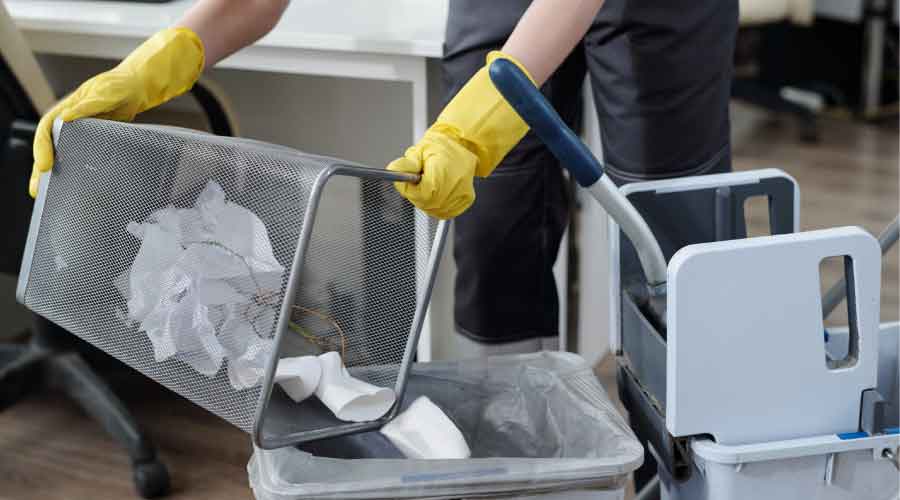
Simple Steps to Improve IAQ in Schools
New certification provides roadmap for addressing indoor air quality. December 15, 2022
By Dan Weltin, Editor-in-Chief
Two years ago it was a struggle to generate public interest in topics such as ventilation and HVAC maintenance. However, the COVID-19 pandemic has highlighted just how much the air people breathe matters, especially in K-12 schools, colleges and universities.
Schools have returned to in-person learning more invested in the health and safety of indoor spaces. At the same time, the American Rescue Plan and 2021 Coronavirus Response and Relief Supplemental Appropriations Act provided U.S. schools with the necessary funds to improve their facilities.
The Healthy Green Schools & Colleges' new certification standard aims to provide schools a definitive roadmap for understanding and addressing the complex factors that affect indoor air quality (IAQ). This partnership between the Healthy Schools Campaign and Green Seal helps managers identify and implement low- or no-cost measures designed to significantly improve school IAQ.
The first-of-its kind standard for healthy and sustainable facilities operations covers a range of practices, from cleaning and pest management to HVAC maintenance and IAQ testing and monitoring.
At NFMT Baltimore in March, Mac Clevenger, National Partnerships Manager for Green Seal, will discuss the standard and how facility managers can improve IAQ during his presentation "An Accessible Roadmap to Healthy Indoor Air Quality."
NFMT: We have known about the negative impacts of poor indoor air quality for years. Why are facilities finally interested in improving IAQ?
Clevenger: There's often a disconnect between what school districts and universities want to do to improve indoor air quality, and what they can realistically implement. Facility professionals are experts at doing a lot with a little, but school infrastructure has suffered from decades of under-investment. Now, the pandemic has moved indoor air quality to the top of everybody’s list, including parents and administrators.
Schools also have a rare opportunity to focus on their facilities thanks to the American Rescue Plan and 2021 Coronavirus Response and Relief Supplemental Appropriations Act, which provided tens of billions for American schools — including funds that can be used for health- and sustainability-focused facility upgrades. From cleaning equipment to air filters and HVAC systems, schools across the nation can use these funds to improve the health, sustainability, and indoor air quality of their campuses.
NFMT: What are some best practices for improving IAQ related to HVAC maintenance?
Clevenger: HVAC systems control the air exchange in the room and clean the air. Even with older systems, proper maintenance is essential to make sure the components are working as effectively as possible and thus most effectively contributing to good indoor air quality.
A facility's standard operating procedures should include regular or quarterly HVAC system inspections using the U.S. Environmental Protection Agency (EPA) ventilation checklist from Tools for Schools. This means quarterly cleaning of clean air supply diffusers, grilles, return registers, and outside air intakes to prevent contaminants from entering the system and spreading around the room. It should also include quarterly inspections of outside air intakes to ensure they work properly and that no standing water is in their vicinity, and quarterly inspections of the building automation system, dampers, actuators, and physical system components.
Facilities should also have a plan for equipment replacement based on the expected lifetime of the equipment, so these expenses do not come as a surprise.
NFMT: Facility managers may not realize that their cleaning and disinfecting programs may be leading to poor IAQ. What are some best practices when it comes to cleaning?
Clevenger: The chemicals inside cleaning and disinfecting products matter, so facility professionals should know the impacts of what they're using.
Many cleaning chemicals can be hazardous to humans and the environment in addition to contributing to poor indoor air quality. Chemicals commonly found in conventional cleaners have been linked to birth defects, cancer, and respiratory disease, among others. In fact, studies have found that regular use of conventional spray cleaners is associated with a 50 percent increase in asthma symptoms – and while custodial workers are most at risk, building occupants come into contact with these chemicals daily.
Choosing products that have been independently certified for healthier, more sustainable ingredients helps protect students, teachers, and staff from these negative health effects. To find products certified by third parties, look for the badge of a reputable ecolabelling organization on the packaging. Certification marks from trusted nonprofits like Green Seal indicate that the cleaning product is safer and more environmentally friendly than conventional alternatives while also demonstrating proven cleaning performance.
In addition to choosing safer products, proper training on product use is also critical. And increasing ventilation can minimize exposure to cleaning chemicals and reduce the chemical buildup that can lead to poor indoor air quality.
NFMT: How often should facilities test for poor IAQ and why?
Clevenger: Consistency is key when it comes to maintaining good indoor air quality. Since so many factors contribute to IAQ, it can fluctuate, making regular testing a vital part of maintaining healthier, safer spaces.
School facilities should monitor CO2 levels in cafeterias, gyms, libraries, and a representative sample of classrooms during peak occupancy at least once per calendar quarter while school is in session. Additionally, schools should conduct air quality testing during peak occupancy in each building at least once per calendar year, and monitor the following contaminants: carbon monoxide; mold; mildew; total volatile organic compounds (VOCs); formaldehyde; radon; particulate matter (PM2.5 and/or PM10); ozone; and other elements that affect IAQ, such as bus diesel exhaust, sewer gas, and natural gas venting.
Building occupants can also provide important feedback regarding indoor air quality that may affect how often facilities should test for contaminants that contribute to poor IAQ. Facilities should solicit continuous feedback or conduct regular interviews with school nurses and other staff members to identify problem areas and trends in health complaints.
NFMT Baltimore takes place March 21-23. Visit www.nftm.com to register.
Dan Weltin is the editor-in-chief for the facility market. He has 20 years of experience covering the facility management and commercial cleaning industries.
Next
Read next on FacilitiesNet












